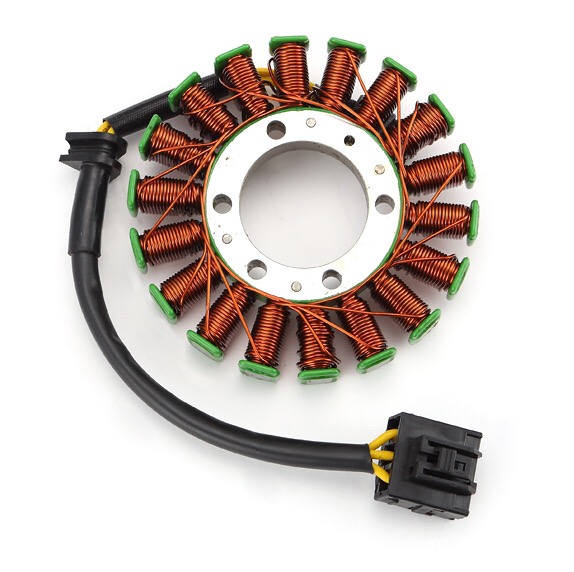  ® ®
|
The 95/50 rule |
Resistance tests, are they used by professional technicians? Not very often. There are actually very compelling reasons to avoid using resistance tests on alternator stators, field coils, ignition pulsers, starter solenoids and ignition coils--anything containing a wire winding. Professional powersports techs know the truth of this. Consider the facts.
Fact number one: Manufacturers hedge their bets where resistance tests are concerned. Factory service manuals let the proverbial cat out of the bag when they do one or both of two very curious things in connection with resistance tests. First, they will often say "...using XYZ multimeter, part number 123456.". This is not an attempt to sell multimeters. This is tantamount to admission that the specification in question is not real-world, being subject as it is to a certain test meter, under certain conditions, including temperature, humidity, and other factors. No good. Resistance clearly is the wrong kind of test for this part. But there's more. Because second, and even more revealing, factory manuals frequently follow resistance specifications with this rather startling troubleshooting advice, "Replace with known good component.". Huh? What is this if not tacit acknowledgement that the factory's resistance specification is tentative and not to be taken at face value? The point is, whatever you call this methodology, it is definitely not troubleshooting.
Fact number two: But the real problem with resistance-testing wire coils is this: A piece of wire a couple hundred feet long coated with lacquer and wrapped into a coil has a habit of losing parts of its insulation and doing crazy things as a result of constant exposure to engine heat and acidic engine oil. Thus these wire coils often "lie" to the troubleshooter. When cool and not carrying an electrical load, they can meet factory manual resistance specification. But when stressed by actually working, by carrying current, and thus warmer and undergoing physical, dimensional expansion, and measured using voltage or amps, it is then that they reveal the truth of their condition.
I call this problem with resistance-testing wire windings the 95/50 rule. Every mechanic with appreciable experience knows it, though not necessarily by this name. Here's what it means. When a wire coil resistance-tests "bad", it is almost surely bad, so the probability that the test result is valid is 95+ percent. Fine. We can work with that. That's the 95 part of the 95/50. But, here's the kicker. If on the other hand the resistance test shows the part is "good", now you have a problem. You have a dilemma. Because, with this "good" result, there's no better than a fifty-fifty chance that the part is actually good. Seriously. Because of the issue with wire coil failure modes described above. A part ohmmed good is a real challenge. The falsely good reading of a bad part will lead the technician on all kinds of diagnostic rabbit trails away from the real issue.
So, bad resistance = probably bad. But good resistance = maybe good, maybe bad. A crap shoot, in other words. Electrical parts having wire windings in them absolutely must be dynamically tested. Avoid using resistance tests in troubleshooting parts containing wire coils. Use instead tests of the parts while they are working. Troubleshooting will be faster and the results more conclusive. If you would like to check out an assenting voice on this, see Dan Sullivan's excellent automotive electrical testing book, Fundamental Electrical Troubleshooting, available on Amazon.
2017 Postscript: Had one of these just last week. Ignition coils on the money both primary and secondary resistance. But using one of several dynamic ignition coil tests, no bueno.
2024 Postscript: Some of my customers, after learning of this principle, have also confirmed that resistance tests of their ignitiin coils failed to find their faults.
|
|
Further reading: |
Email me
© 1996-2022 Mike Nixon
